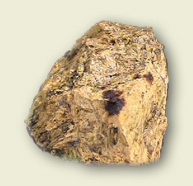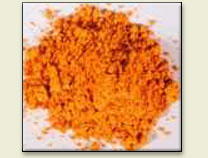How Naples yellow is made:
| Origin: artificial | identical with the mineral bindheimite (at Mineralogy Database). This natural minerals though known in nature was not used for pigment. |
Natural mineral: bindheimite |
|
| Artificial variety of pigment | Calcination of a lead compound (oxide, nitrate or lead white) with an antimony compound (oxide, sulfide or potassium antimonate). |
| 19th century recipe | Twelve oz. of ceruse, 2 oz. of the sulphuret of antimony, 1/2 oz. of calcined alum, 1 oz. of sal ammoniac. Pulverize these ingredients, and having mixed them thoroughly, put them into a capsule or crucible of earth, and place over it a covering of the same substance. Expose it at first to a gentle heat, which must be gradually increased till the capsule is moderately red. The oxidation arising from this process requires, at least, 5 hours' exposure to heat before it is completed. The result of this calcination is Naples yellow, which is ground in water on a porphyry slab with an ivory spatula, as iron alters the color. The paste is then dried and preserved for use. It is a yellow oxide of lead and antimony. There is no necessity of adhering so strictly to the doses as to prevent their being varied. If a golden color be required in the yellow, the proportions of the sulphuret of antimony and muriate of ammonia must be increased. In like manner, if you wish it to be more fusible, increase the quantities of sulphuret of antimony and calcined sulphate of alumina. |
The ground pigment:
Pile of ground Naples yellow

Other yellows
(intro) - Cadmium yellow/red - Chrome yellow - Cobalt yellow - Indian yellow - Lead-tin yellow - Lemon yellow - Naples yellow - Orpiment - Yellow ochre
(intro) - Cadmium yellow/red - Chrome yellow - Cobalt yellow - Indian yellow - Lead-tin yellow - Lemon yellow - Naples yellow - Orpiment - Yellow ochre

